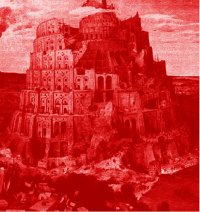Digital library of construction informatics and information technology in civil engineering and construction
Digital library
Paper: w78_2007_37
| Paper title: | Missing fundamental stratum of the current forms of the representation of concepts in construction |
| Authors: | Ivan Mutis, Raja R.A. Issa, Ian Flood |
| Summary: | The generation of concepts in the construction industry involves the interpretation of syntactically defined symbolic notations, such as logic, frames, semantic networks, natural language, and of other forms such as visual rep-resentations. These notations are deliberately organized to define concepts. Models as forms of representations are based on symbols that are aimed at referring to some entities of the world with properties and relations apprehended within them. Models involve grouping a set of relations, which characterize concepts, with the purpose of sharing and understanding these concepts by members of the community. However, models suffer the limitations that logic and the symbolic notations bear, because they cannot capture the richness of the phenomena of the world in their syntactic no-tation nor other intentionality features. Other forms of representations such as visual representations suffer the same limitations. An analysis of the nature of the representations employed in the construction industry suggests the inclusion of the ac-tor’s role in a new stratum for generating representations of construction concepts. This actor, who manipulates or generates the representation for communicating concepts, is committed to the intentionality aspects of the represented concept that are not captured in current forms of the representation. The inclusion of these and other phenomenological aspects concerning the nature of the representation are intended to generate representations for accurate interpreta-tions. The modus operandi with these representations indicates a subsequent interpretation by other actors or project participants. The inclusion of this stratum promises a significant progress in creating efficiency in interoperability on construction projects. The assumption is that the representations are cognitive manifestations of common, shared con-cepts employed by the construction industry community. This analysis is supported and developed through the semiotic theory which addresses the nature of the representations through signs and the role of agents with the representations and with the external physical domain. This study attempts to approximate semiotics as an experience that illustrates the reasoning process from external rep-resentations and the role of intentionality in employing external representations. This experience inquires about the form of the correspondence of the perceived, entity, event, and relations, or, in other words, a correspondence of a phe-nomenon in the world with the concept in the construction participant’s mind. In addition, the purpose of this experi-ence is to provide direction to the method of how semantics aspects should be understood to give interpretations for concepts employed in the construction industry. |
| Type: | |
| Year of publication: | 2007 |
| Keywords: | semiotics, construction concepts, representations, interpretation |
| Series: | w78:2007 |
| ISSN: | 2706-6568 |
| Download paper: | /pdfs/w78-2007-094-182-Mutis.pdf |
| Citation: | Ivan Mutis, Raja R.A. Issa, Ian Flood (2007). Missing fundamental stratum of the current forms of the representation of concepts in construction. 615 (ISSN: 2706-6568), http://itc.scix.net/paper/w78_2007_37 |
inspired by SciX, ported by Robert Klinc [2019]





